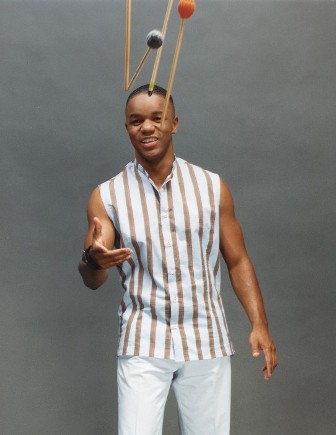
Medeski Martin and Wood's story is - like most great stories - one of humble beginnings, friendship, determination, a happy ending and a very bright future.
The trio of keyboard/organ/piano player John Medeski, drummer/percussionist Billy Martin, and bassist Chris Wood formed not in some vastly creative alternate universe, but rather in the neighborhood of Brooklyn, New York, known as D.U.M.B.O. (Down Under the Manhattan Bridge Overpass) in 1991. Medeski and Wood, students at Boston's prestigious New England Conservatory of Music, decided to move to New York City, with intent to explore the late-night underworld of the city's burgeoning jazz scene.
John Medeski, Billy Martin, and Chris Wood were looking to create music that reflected who they were, individually and collectively. The trio began experimenting with contemporary hip-hop beats that could swing as hard as jazz rhythms, yet remained essentially simple and propulsive, giving the musicians ample room to create hypnotic textures and sounds that were brimming with both improvisation and harmony. "In the beginning, as it is now, we went by gut instinct," says Wood. "We have a natural connection between us, as people and as musicians, and we just let things flow in whatever direction they went."
Gigs turned into multiple engagements, dates at small clubs led to performances at legendary New York City downtown hotspots like the Village Gate and the Knitting Factory, and soon the band was packed into Billy's van, traveling up and down the North Eastern United States. The next step was a natural one for any band - capture the music for posterity - and so MMW recorded their debut, "Notes From The Underground," which they released independently on hap-jones records in early 1991.
More gigs followed, and soon it was time for another release. This time, Medeski Martin & Wood inked a deal with Gramavision, a larger but still independent label that afforded them substantial freedom to create music the way they felt it should be played. In the summer of 1993 they released "It's A Jungle In Here," purchased an R/V, and hit the road for nearly half a year.
Communal, on-the-road living has broken up many bands, but true-to-form, MMW thrived in this potentially treacherous situation. Their secret was a unique combination of individual personalities, with each band member taking on additional roles that suited their own aptitudes and interests. As always, nothing was planned out; it just happened.
John, with his love for cooking, was the band's chef, preparing incredible meals that made life on the road more bearable. Billy, who worked well with his hands, could fix anything up to and including the band's RV. And Chris, with his head for business, took care of the group's accounting. As it was with the music, Medeski Martin & Wood balanced each other out perfectly.
"We have a certain chemistry between us, musically," says Martin, "and in addition to that we have a strong friendship that goes beyond the music. Even when we have ups and downs, the music and our friendship carries us through."
1994 saw the release of "Friday Afternoon in the Universe," and by 1995 it seemed like MMW was truly touring the universe, as their concert itinerary spread out and around the entire United States, and into Europe and Japan. In 1996, the band released their final Gramavision disc, "Shack-Man," which they celebrated with an 8-week Monday night residency at New York's Knitting Factory.
With much fanfare, the band then signed with another record label - the legendary jazz imprint Blue Note Records. At the turn of the new millennium, they released their all-acoustic album "Tonic," named for the Lower East Side club (and former kosher winery) where it was recorded. The band's affiliation with Blue Note resulted in three discs (plus a best-of set), and found them again pushing their sonic boundaries, incorporating percussionists, horn sections, and turntables into their already potent sound.
Which brings us to the here-and-now. Medeski Martin & Wood are no longer signed to anyone else's record label; they have come full circle by establishing their own label, Indirecto Records, as an outlet for their music. Which, quite happily, brings them neatly back to the way they did things in their formative years. Releasing their own music, their own way, in its own time.
The trio's first Indirecto release, "Out Louder," is a four-way collaboration with guitarist John Scofield, which true-to-form is heavy on group improvisation, irresistible grooves, rich harmonies, and strong melodies. While nothing definite is planned - as always, the band are taking each day and each opportunity as they come - it is possible that "Out Louder" could be the first in a series of independently-released projects that Medeski Martin & Wood will do in collaboration with other artists.
"By having our own label, we can make music however we want, and make as much as we want," explains Medeski. "In the history of man, recorded music is just a blink of the eye, just a small part of that vast history. The real thing is playing music live, and that is what we do. Beyond that, we'll be putting out recordings as often or as infrequently as we want."
The band also plan another first - a disc of children's music titled "Let's Go Everywhere" - set for release in early 2007 on the Little Monster/V2 label that promises to be as engaging for their established fan base as it is for the kids. "It's got everything, instrumentals, vocal songs, our kids are singing on it" says Wood.
Plus, there are the usual side projects going on, creative outlets which all three band members say serve to strengthen and add to the sound of the trio when they converge. Medeski Martin and Wood live in our world, playing music that reflects their surroundings and communities. At the same time, they are a small world unto themselves, where creativity and spontaneity are honored, revered, and encouraged. And the world-at-large is a much better place for it.



